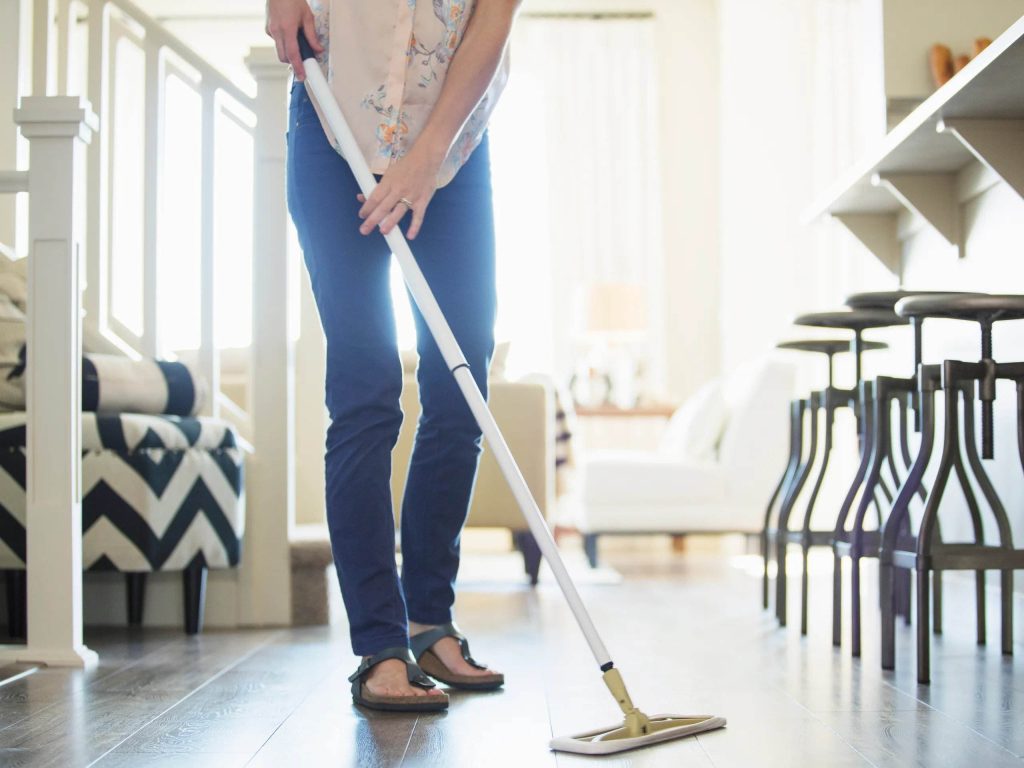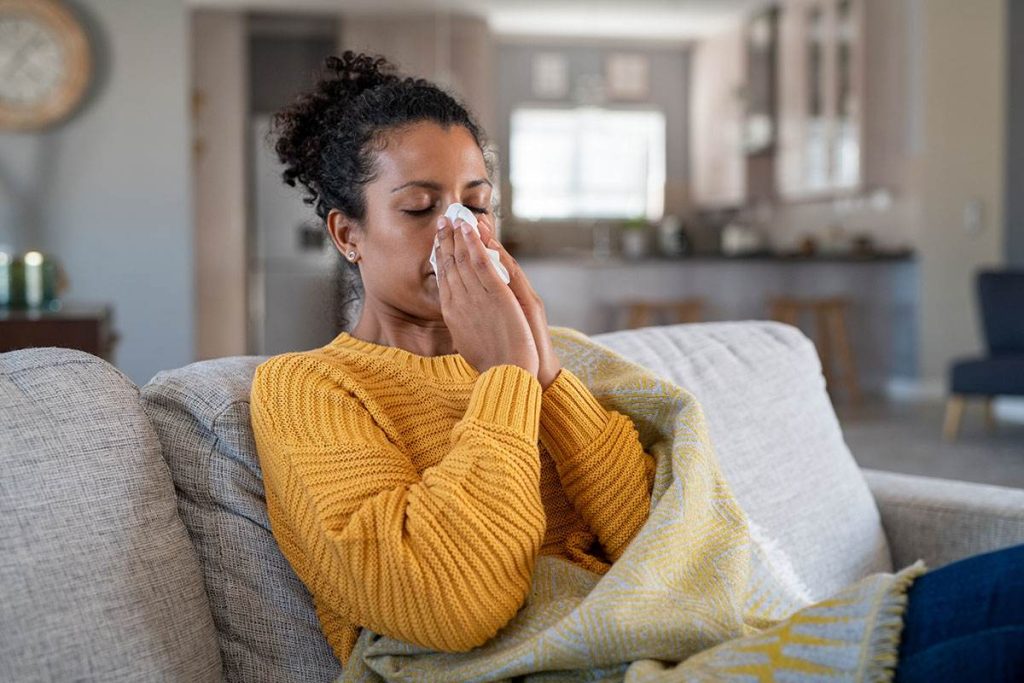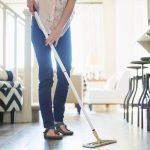Are You Allergic to Cleaning Your Home?
POSTED ON November 15, 2023
As a homeowner or renter, maintaining a clean and healthy living space is important for your well-being. Not only does a tidy home promote a sense of calm and organisation, but it can also help reduce indoor allergens that may cause health issues for you and your family.
In this article, we'll discuss various aspects of maintaining a healthy living environment, including:
- The Link Between Clutter and Indoor Allergens
- Professional Cleaning Services
- Strategies for Allergen Management

Professional Home Cleaning Services to Keep Allergies at Bay
While routine cleaning can help, professional cleaning services offer an elevated level of cleanliness, making it easier to keep allergies at bay. Here's how professional cleaning services can make a difference:
- Thorough Cleaning:
Professional cleaners possess the skills, tools, and expertise to clean your home comprehensively. This includes areas often overlooked during regular cleaning, ensuring no allergen hideouts.
- Advanced Equipment:
Using professional-grade equipment, such as HEPA filters, professional cleaners can effectively eliminate allergens from the air. HEPA filters trap even the tiniest particles, enhancing indoor air quality.
- Allergy-Friendly Cleaning:
For those who experience allergies during cleaning, professional services are a saviour. They minimise allergen disturbance, reducing the release of dust, pet dander, and mould spores into the air during the cleaning process.
- Time and Stress Savings:
With your busy schedule, finding time for thorough cleaning can be difficult. Professional cleaning services can save plenty of your time and effort and also reduce the stress associated with keeping your home in the best condition.
- A Healthier Living Environment:
By employing proper techniques and equipment, professional cleaners create a safer space for allergy sufferers. You can breathe easier and enjoy a healthier living environment.
The Connection Between Clutter and Indoor Allergens
The connection between a messy home and allergens indoors is interesting. When your home gets cluttered and dirty, it attracts allergens that can make you and your family sick. Some common allergens that enter your property are:
- Dust Mites: These are tiny creatures that aren't visible to the naked eye and can be seen with a microscope only. They love to live in dusty places and munch on dead skin cells. You'll usually find them in your bed, on your furniture, and in your carpets.
- Pet Dander: It's like little bits of skin, fur, or feathers that pets shed. Even if you don't have pets, these particles can sneak into your home on your guests' clothes or yours and cause allergies.
- Pollen: It comes from plants and trees outside. Pollen can sneak into your home through open windows and doors or by sticking to your clothes. It can also hitch a ride through your home's ventilation system.
- Mold Spores: These tiny things can grow in damp and humid places around your home, like your bathroom, basement, or kitchen.

Hidden surfaces, limited air circulation, difficult cleaning, and storage areas can all contribute to the accumulation of allergens in your home. If the surfaces in your home are covered in clutter, it not only makes cleaning thoroughly a challenge, but dust mites and pet dander can accumulate on these surfaces, hence leading to increased allergen exposure, too. Clutter can also block air vents and restrict the flow of fresh air, trapping allergens and preventing them from being filtered out of your living space.
Managing Allergies Indoors
In addition to regular cleaning and professional cleaning services, there are several strategies you can use to manage household allergens:
- Declutter your living space: As discussed earlier, clutter can create an ideal environment for allergens to thrive and accumulate. Decluttering can significantly minimise allergen exposure, improving indoor air quality and overall health.
- Use allergen-proof covers: Allergen-proof covers can be used on bedding, pillows, and upholstered furniture to prevent dust mites and pet dander from accumulating.
- Wash bedding and linens regularly: Washing bedding and linens in hot water can help kill dust mites and remove allergens.
- Use a HEPA air filter: HEPA air filters can remove allergens from the air, improving indoor air quality.
- Keep on top of vacuuming: Vacuuming can help eliminate dust, pet dander, and other allergens from carpets and upholstery.
- Use Dehumidifiers: Keeping humidity levels between 30-50% can help prevent mold growth
Effective Methods for Decluttering
Decluttering can be difficult, especially when you need help deciding what to keep and dump. Below are some effective methods that can help you declutter your space efficiently.
- KonMari Method: A systematic approach to decluttering and organising. It focuses on keeping only those items that "spark joy" and letting go of everything else. The Japanese method of reducing the clutter in your environment was developed by the organising consultant Marie Kondo.
- The 4-box method: Keep, Donate, Sell, and Trash Boxes. Both approaches provide well-organised strategies for decluttering, simplifying determining what to retain and what to release. Select the best approach for your decluttering objectives, and enjoy the advantages of an orderly and organised living space.
Tips for Overcoming Decluttering Challenges
Decluttering can be emotionally challenging, and it's expected to encounter obstacles. Here are some tips for overcoming some of the obstacles standing in your way to a clean and allergen-free sanctuary:
- Procrastination: Set specific goals and deadlines for decluttering tasks. Ask a friend to check your progress if setting reminders does not make you feel accountable enough to complete your planned work.
- Decision Paralysis: When unsure about an item, ask yourself if it's adding value to your life. If not, you must throw it.
- Fear of Regret: If you're worried about regretting your decisions, consider a "trial separation." Box up items you're unsure about and store them out of sight. If you don't miss them after a designated time, it becomes easier to part with them.
- External Pressure: If family members resist decluttering, have open conversations about your goals and involve them in the process. Respect their attachment to certain items and find a compromise.
Frequently Asked Questions
Q: Can cleaning the house cause allergies?
A: Yes, cleaning can stir up dust, pet dander, and other allergens, which can cause allergic reactions in some people.
Q: How do you clean your house with allergies?
A: Use a damp cloth to wipe down surfaces. This helps catch allergens like dust. Don't forget to vacuum with a HEPA filter; it's like a super filter that sucks up tiny allergens. Also, wear a cleaning mask to avoid breathing in those sneeze-inducing particles.
Q: How often should you clean your house if you have allergies?
A: A weekly house cleaning routine is a good idea to avoid allergies. While cleaning, focus on areas where allergens build quickly, like bedding, carpets, and upholstery.
Q: How do you tell if your house is giving you allergies?
A: If you find yourself sneezing, dealing with itchy eyes, or having trouble breathing at home, your house could be the resin behind those pesky allergies.
Q: Why are my allergies bad after cleaning?
A: Cleaning can temporarily increase the number of allergens in the air as dust and other particles are disturbed.
Q: Why do I feel sick after cleaning my house?
A: Exposure to cleaning chemicals or disturbed allergens can cause headaches, nausea, or respiratory issues.
Q: What are the signs of dust mites?
A: Some common signs of dust mites are sneezing, runny nose, itchy eyes, and asthma symptoms. The naked eye cannot see dust mites.
Q: Do air purifiers help with indoor allergens?
A: Yes, air purifiers featuring HEPA filters can help reduce indoor allergens by trapping particles from the air.
Q: Do air purifiers help with allergies?
A: Yes, they can help alleviate allergy symptoms by reducing allergens in the indoor environment.
Q: How do you deep clean a bedroom for allergies?
A: Wash bedding in hot water, vacuum with a HEPA filter, use allergen-proof mattress and pillow covers, and minimise clutter.
Q: How often does the average person clean their house?
A: This varies, but many people do some form of cleaning weekly.
Q: Do dehumidifiers help with allergies?
A: Yes, by reducing humidity, dehumidifiers can help prevent mould growth and dust mite proliferation, common allergens.
Q: What triggers most allergy symptoms indoors?
A: Common triggers include dust mites, pet dander, mould, pollen, and cockroach droppings.
In Conclusion
By understanding the connection between clutter and indoor allergens, utilising professional cleaning services, and implementing strategies for managing household allergens, you can create a space that promotes cleanliness, organisation, and healthy living. If cleaning triggers your allergies, trust your regular home cleaning tasks to professional house cleaning services.
Ready to enjoy an allergen-free home? Book your professional cleaning service with Paul's Cleaning today!





